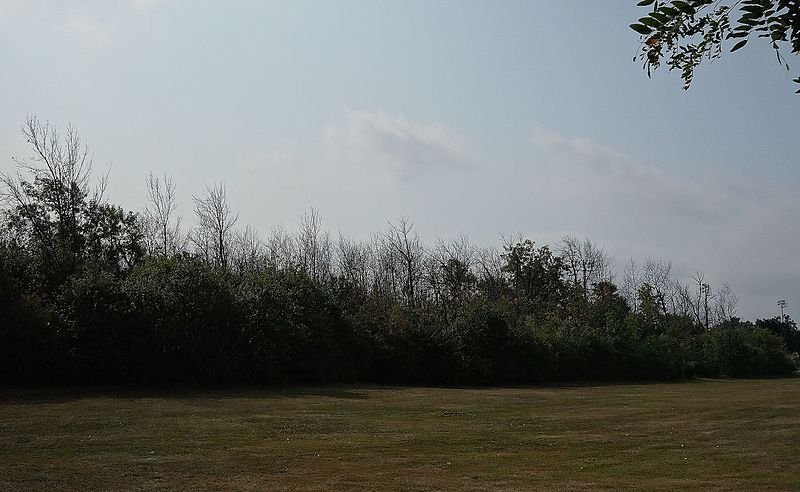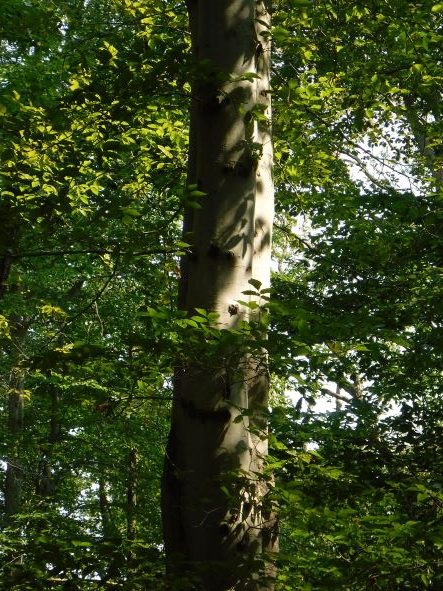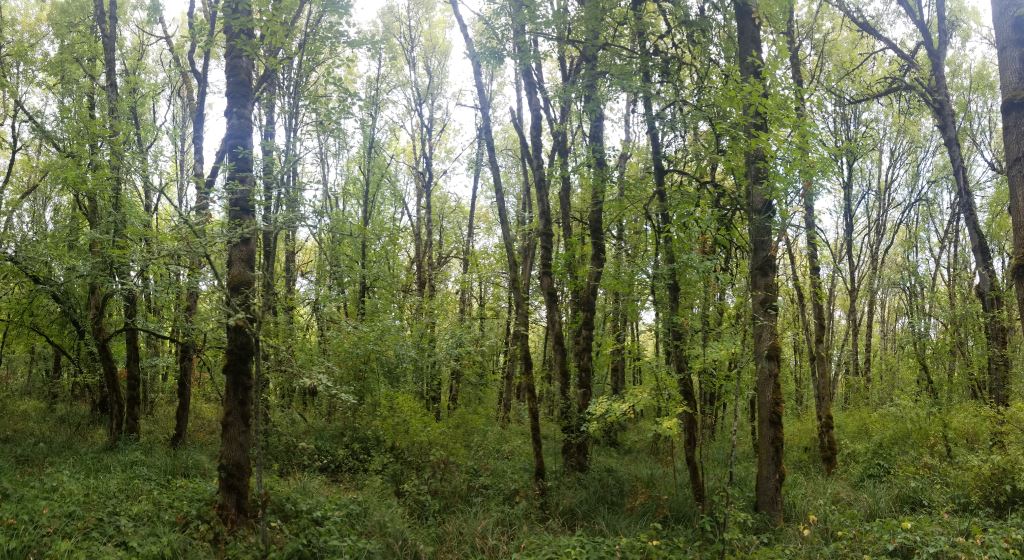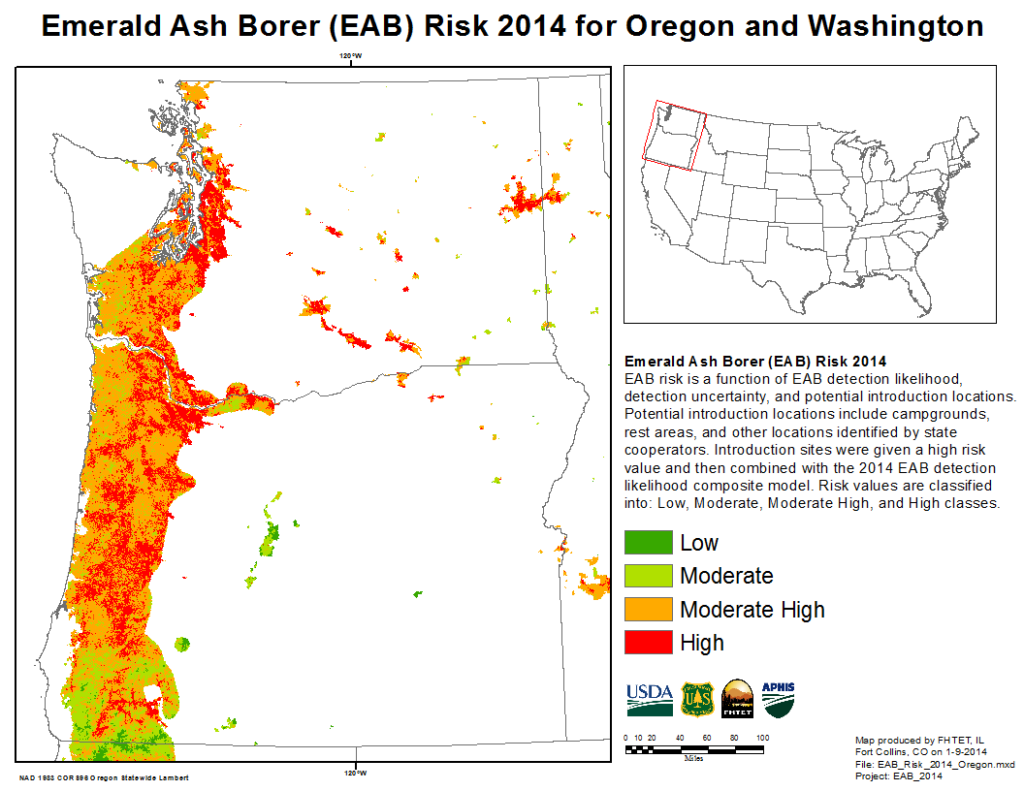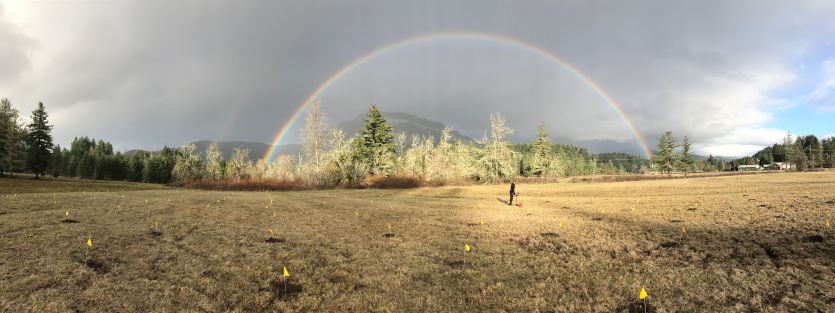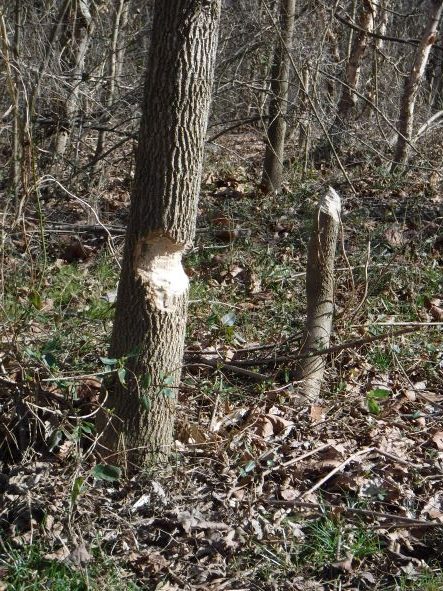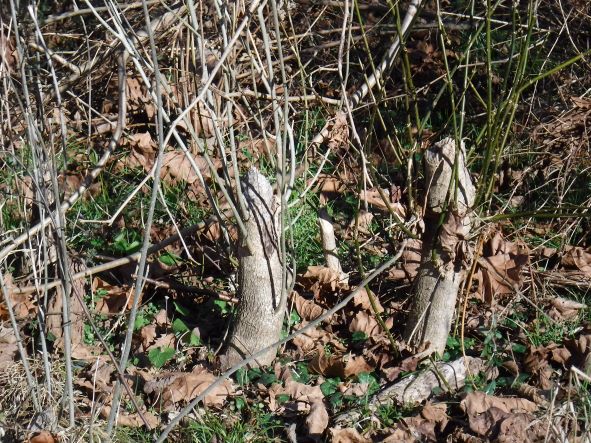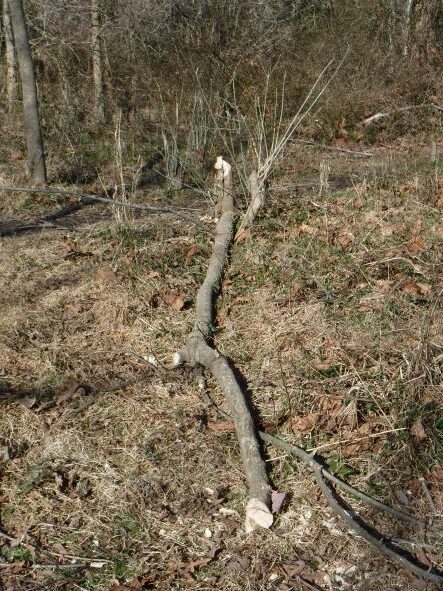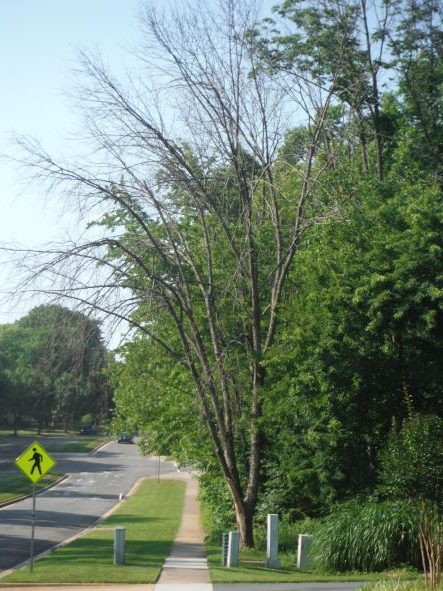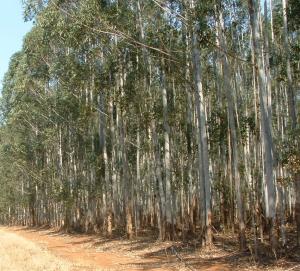
I am belatedly catching up with developments regarding sudden oak death (SOD; Phytophthora ramorum). The situation is worsening, with three of the four existing strains now established in U.S. forests. Nursery outbreaks remain disturbingly frequent.
This information comes primarily from the California Oak Mortality Task Force’s (COMTF) newsletters posted since October; dates of specific newsletters are shown in brackets.
Alarming presence of variants & hybridization
The long-feared risk of hybridization among strains has occurred. Canadian authorities carrying out inspections of a British Columbia nursery found a hybrid of European (EU1) and North American (NA2) clonal lineages. These hybrids are viable, can infect plants and produce spores for not only long-term survival but also propagation. So far the hybrid has been found in a single nursery; it has not spread to natural forests. The pathogen is considered eradicated in that nursery, so it is hoped it cannot reproduce further. [December 2021 newsletter, summarizing research by R. Hamelin et al.]
Noted British forest pathologist Clive Brasier warned in 2008 about the risk of hybrids evolving in nurseries which harbor multiple strains of related pathogens. (See full citation at end of the blog.)
The threat is clear: three of the four known variants are already established in forests of the Pacific Northwest – NA1, NA2, and EU1. (For an explanation of P. ramorum strains and mating types, go here.)
In Oregon, the EU1 strain was detected in a dying tanoak (Notholithocarpus densiflorus) tree in the forests of Curry County in 2015. Genetic analysis revealed that the forest EU1 isolates were nearly identical to EU1 isolates collected in 2012 from a nearby nursery during routine monitoring. This detection was considered to be evidence that multiple distinct P. ramorum introductions had occurred. The scientists expressed concern that the presence of this strain – which is of the A1 mating type while the widely established NA1 population of the pathogen in the forest is of the A2 mating type — makes the potential for sexual recombination more likely. Therefore, the state prioritized eradication of the EU1 forest infestation [Grünwald et al. 2016]. (For an explanation of P. ramorum strains and mating types, go here.)
The NA2 strain was detected in 2021, 33 km north of the closest known P. ramorum infestation. Because Oregonians genotype all detections on the leading front of the infection, they completed Koch’s postulates and found this surprising result [February 2022]. NA2 is thought to be more aggressive than the NA1 lineage [February 2022]. Surveys and sampling quickly determined that the outbreak is well established — 154 positive detections [February 2022] across more than 500 acres [October 2021]. Oregon Department of Forestry immediately began treatments; the goal is to prevent overlap with existing NA1 and EU1 populations. [April 2022; summarizing research by Peterson et al.] Given the number of infected trees and the new variant, Oregon pathologists believe this to be a separate introduction to Oregon forests that has been spreading in the area for at least four years [February 2022].
Scientists [April 2022; summarizing research by Peterson et al.] again note evidence of repeated introductions of novel lineages into the western US native plant communities; this region is highly vulnerable to Phytophthora establishment, justifying continued monitoring for P. ramorum not only in nurseries but also in forests.

The EU1 strain is also present in northern California, specifically in Del Norte County. It was detected there in 2020. Despite removal of infected and nearby host trees (tanoaks) and treatment with herbicide to prevent resprouting, the EU1 strain was again detected on tanoaks in 2021. The detected strain is genetically consistent with the EU1 outbreak in Oregon forests. Oddly, the usual strain found in North American forests, the NA1 strain, was not detected in Del Norte Co. in 2021 [February 2022].
One encouraging research finding [April 2022; summarizing research by Daniels, Navarro, and LeBoldus] is that established treatment measures have had significant impact on both the NA1 & EU1 lineages. They found on average 33% fewer positive samples at treated sites where NA1 is established; 43% reduction in P. ramorum prevalence at EU1 sites. Prevalence of P. ramorum in soil was not affected by treatment.
SOD Spread in Forests
In California, the incidence of new Phytophthora ramorum infections fell in 2021 to a historic low – estimated 97,000 dead trees across 16,000 acres, compared to ~885,000 dead trees across 92,000 acres in 2019 [April 2022]. It is agreed that the reason is the wave of mortality sparked by the very wet 2016-2017 winter has subsided and has been followed by several years of drought [February 2022].

In Oregon, however, SOD continues to spread. In 2010, the OR SOD Program had conceded that eradication was no longer feasible. Instead, authorities created a Generally Infested Area (GIA) where removal of infested tanoaks was now optional (not mandated) on private and state-owned lands. Since then, SOD has continued to spread and intensify within the designated zone. The GIA has been expanded eight times since its establishment in 2012; it now it covers 123 sq. mi. There has also been an immediate increase in tanoak mortality [December 2021].
In 2021, two new infestations were detected outside the GIA. One outbreak is on the Rogue River-Siskiyou National Forest along the Rogue River, 6 miles north of any previously known infestation. The second is just outside Port Orford [February 2022], 33 km north of the closest known infestation. This second infestation is composed of the NA2 variant [see above]. The Oregon Department of Agriculture (ODA) established emergency quarantines at these sites and began eradication efforts at both sites. The Oregon legislature appropriated $1.7 million to Oregon Department of Forestry to carry out an integrated pest management program to slow spread of the disease [February 2022].
Scientific research indicates that this situation might get worse. While it has long been recognized that California bay laurel (= Oregon myrtle) (Umbellularia californica) and tanoak are the principal hosts supporting sporulation and spread, it has now been determined that many other native species in the forest can support sporulation. Chlamydospore production was highest on bigleaf maple (Acer macrophyllum)and hairyCeanothus (Ceanothus oliganthus). All the other hosts produced significantly fewer spores than tanoak and myrtle [October 2021; summarizing research by Rosenthal, Fajardo, and Rizzo]
Furthermore, studies that aggregate observations of disease on all hosts, not paying attention to their varying levels of susceptibility, might lead scientists to misinterpret whether the botanic diversity slows spread of the pathogen [October 2021 summarizing research by Rosenthal, Simler-Williamson, and Rizzo].
Monitoring to detect any possible spread to the East

The USDA Forest Service continues its Cooperative Sudden Oak Death Early Detection Stream Survey in the East. In 2021, 12 states participated – Alabama, Florida, Georgia, Illinois, Maryland, Mississippi, North Carolina, Pennsylvania, South Carolina, Texas, West Virginia, and Wisconsin. Samples were collected from 79 streams in the spring. Two streams were positive, both in Alabama. Both are associated with nurseries that were positive for P. ramorum more than a decade ago [October 2021].
Continued infestations in the nurseries
USDA Animal and Plant Health Inspection Service (APHIS) reported that in 2021, the agency supported compliance activities, diagnostics, and surveys in nurseries in 22 states. P. ramorum was detected at 17 establishments. Eight were new; nine had been positive previously. These included seven nurseries that ship intrastate – all had been positive previously. Six were already under compliance agreements. Also positive were three big box stores – none previously infected; and six nurseries that sell only within one state – five new. Infections at the big box outlets and half the intrastate nurseries were detected as a result of trace-forwards from other nurseries.
P. ramorum was detected in 300 samples in 2021 – 144 from plants in the genus Viburnum; 106 from Rhodendron (including azalea); and much lower numbers from other genera.
APHIS funds states for annual nursery surveys, compliance activities, and diagnostics through the: Plant Protection Act Section 7721 and the Cooperative Agricultural Pest Survey (CAPS) program. Table 4 lists states receiving survey funds. APHIS also supported compliance and diagnostic activities in California, Louisiana, Oklahoma, Oregon, Pennsylvania, Washington, and several states through Florida.
APHIS’ report – which provides few additional details about the nursery detections – can be found here.
California:
The California Department of Food and Agriculture (CDFA) reported that three of the eight nurseries regulated under either the federal or state sudden oak death program tested positive in 2021. This was down from five positive nurseries in 2020 [February 2022]. (In the past, numbers of nurseries testing positive have declined during droughts, risen during wet years.) At one interstate-shipping nursery 145 positive Viburnum tinus plants were detected by regulators in December 2021. Apparently the detection efforts were prompted by a trace-back from a nursery in an (unnamed) other state [April 2022].
Oregon:
Oregon continues to struggle with the presence of Phytopththora ramorum in the state’s nurseries. Early in 2021 the situation looked good. Three of eight interstate shippers and two intrastate shippers “passed” their sixth consecutive inspection with no P. ramorum detected so they were released from state and federal program inspection requirements. A fourth interstate-shipping nursery had ceased operating. By the end of the year, however, circumstances had deteriorated. One of the four interstate shippers still under regulatory scrutiny appeared to be badly infested. After routine autumn monitoring detected an infected plant, subsequent delimitation samplings detected 30 additional positive foliar samples and a large number (24) of samples were inconclusive. By spring 2022 six nurseries had to be inspected following trace-forwards from out-of-state nurseries. No P. ramorum was detected in five of these nurseries; the sixth had one positive foliar sample, so it is now under more stringent regulatory supervision [April 2022].
Washington:
Washington has only one interstate shipping nursery that is regulated under APHIS’ program; it tested negative in autumn 2021 [December 2021]. Meanwhile, USDA & Washington Department of Agriculture (WSDA) decided to deregulate the Kitsap County Botanical Garden where P. ramorum had been detected in 2015. Since then, more than 5,000 samples have been collected; 99.1% have tested negative. The last positive plant sample was collected in February 2016. Under a compliance agreement, the botanical garden will continue the best management practices deemed successful in eradicating the pathogen [December 2021]. However, water at the site continues to test positive [February 2022]. These water detections – in Washington and Alabama (above) – raise troubling questions.
Meanwhile, in late winter [April 2022], WSDA had to conduct two trace-forward investigations on plants that shipped from (unnamed) out-of-state nurseries. As of the April newsletter, 13 samples from four locations were all negative.
A stubborn problem has been the persistence of SOD infections in nurseries after the Confirmed Nursery Protocol has been carried out. Research indicates the reason might be that the pathogen is still there in the form of soilborne inoculum in buried, infested leaf debris [December 2021 newsletter; summarizing research by Peterson, Grünwald, and Parke].
Another native tree identified as host

Dieback on golden chinquapin, Chrysolepis chrysophylla, a slow growing, evergreen tree native to the U.S. west coast has been confirmed as caused by Phytophthora ramorum. The detection was in a part of Marin County, California heavily infested by P. ramorum since early in the epidemic. Affected trees were large overstory trees. Unlike other hosts in the Fagaceae, there were no external bole cankers [April 2022 newsletter; summarizing research by Rooney-Latham, Blomquist, Soriano, and Pastalka].
SOURCES
Brasier, C.M. 2008. The biosecurity threat to the UK and global environment from international trade in plants. Plant Pathology (2008) 57, 792-808
Grunwald, N.J., M.M. Larsen, Z.N. Kamvar, P.W. Reeser, A. Kanaskie, J. Laine and R. Wiese. 2016. First Report of the EU1 Clonal Lineage of Phytophthora ramorum on Tanoak in an Oregon Forest. Disease Notes. May 2016, Vol. 100, No. 5, p. 1024
Posted by Faith Campbell
We welcome comments that supplement or correct factual information, suggest new approaches, or promote thoughtful consideration. We post comments that disagree with us — but not those we judge to be not civil or inflammatory.
For a detailed discussion of the policies and practices that have allowed these pests to enter and spread – and that do not promote effective restoration strategies – review the Fading Forests report at http://treeimprovement.utk.edu/FadingForests.htm
